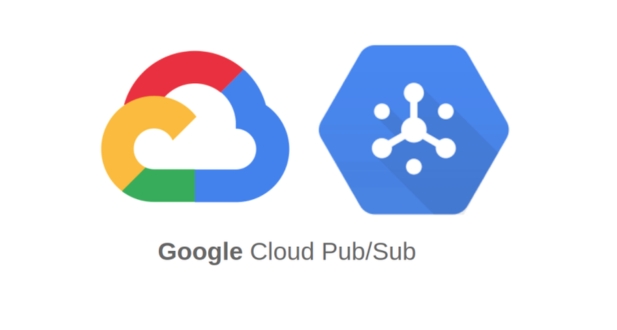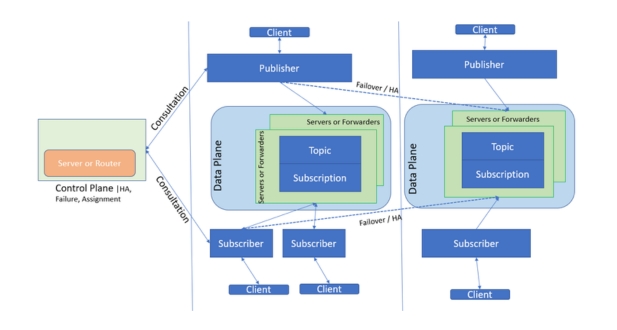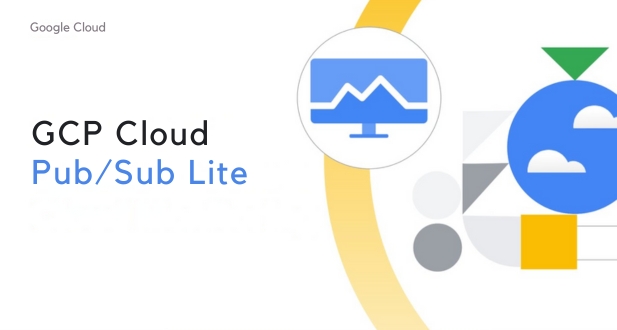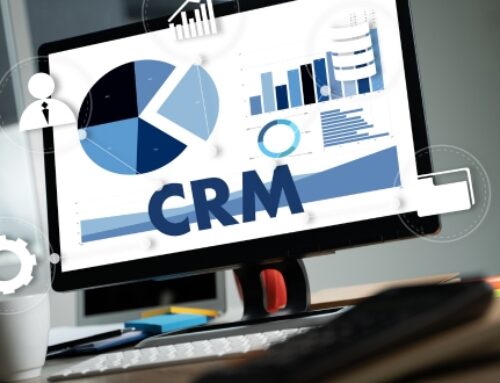Introduction to GCP Cloud Pub/Sub Lite
Definition and Purpose
GCP Cloud Pub/Sub Lite stands as a lightweight and scalable event messaging service offered by Google Cloud Platform (GCP). Designed to facilitate efficient communication between applications and services, Cloud Pub/Sub Lite inherits the core functionalities of its predecessor, Cloud Pub/Sub, with a particular emphasis on being more streamlined and resource-efficient.
Cloud Pub/Sub Lite serves as the backbone for event-driven architectures, enabling applications to exchange information in real-time. It operates on a publish-subscribe model, where publishers send messages to specific topics, and subscribers receive those messages. The “Lite” designation signifies a focus on simplicity, cost-effectiveness, and ease of use, making it an ideal choice for scenarios where a more lightweight event messaging system is preferred.
This service is built to accommodate scenarios where high-throughput, low-latency communication is essential. Whether it’s handling data from IoT devices, coordinating microservices in a cloud-native environment, or supporting real-time analytics, Cloud Pub/Sub Lite is engineered to deliver messages reliably and quickly.
Target Audience
Identifying the right audience for Cloud Pub/Sub Lite is crucial for understanding its optimal use cases. Developers and businesses that benefit the most from Cloud Pub/Sub Lite include those with a demand for streamlined, lightweight event messaging solutions.
- Developers of Microservices Architecture: Cloud Pub/Sub Lite is well-suited for developers building microservices architectures. Its lightweight nature allows for seamless communication between microservices, contributing to a more agile and scalable application environment.
- IoT Application Developers: For Internet of Things (IoT) applications where devices generate a continuous stream of data, Cloud Pub/Sub Lite provides an efficient way to handle and process this data in real-time.
- Real-time Analytics: Businesses requiring real-time analytics capabilities can leverage Cloud Pub/Sub Lite to ingest and process data streams rapidly. This is particularly valuable in scenarios where timely insights drive decision-making.
- Event-Driven Applications: Any application relying on an event-driven architecture can benefit from Cloud Pub/Sub Lite. This includes applications that respond to user actions, system events, or external triggers.
Understanding these target audiences and their use cases helps in appreciating the versatility and practical applications of GCP Cloud Pub/Sub Lite in various technological landscapes.
Core Features and Use Cases of GCP Cloud Pub/Sub Lite
Key Features
Cloud Pub/Sub Lite boasts a set of features that distinguish it as a powerful and efficient event messaging service:
- Cost-Effective Scaling: One of the key features of Cloud Pub/Sub Lite is its cost-effective scaling. The service allows users to pay only for the resources they consume, making it an economical choice for projects of varying sizes.
- Lightweight Design: As a “Lite” version, Cloud Pub/Sub Lite is designed to be lightweight and resource-efficient. This ensures that it can be seamlessly integrated into applications without imposing significant overhead.
- At-Least-Once Delivery: Ensuring message delivery reliability, Cloud Pub/Sub Lite follows the at-least-once delivery semantics. This means that messages are guaranteed to be delivered at least once, minimizing the risk of data loss.
- Streamlined API: Cloud Pub/Sub Lite features a streamlined API that simplifies the process of publishing and subscribing to messages. The intuitive interface enhances developer productivity and makes it easy to integrate the service into applications.
- Horizontal Scalability: The service offers horizontal scalability, allowing it to handle varying workloads and adapt to changing demands. This makes it suitable for applications with dynamic or unpredictable event loads.
Use Cases
Cloud Pub/Sub Lite finds application across diverse industries and scenarios:
IoT Data Ingestion: In the realm of IoT, Cloud Pub/Sub Lite excels in handling the massive influx of data generated by devices. It ensures that data from sensors and connected devices is efficiently ingested, processed, and acted upon in real-time.
- Microservices Communication: Cloud Pub/Sub Lite is well-suited for facilitating communication between microservices in a distributed architecture. Its lightweight design and efficient messaging capabilities contribute to seamless interactions between components.
- Real-Time Analytics: Businesses leveraging real-time analytics benefit from Cloud Pub/Sub Lite’s ability to ingest and process data streams rapidly. This is crucial for scenarios where timely insights drive critical decision-making processes.
- Event-Driven Applications: Cloud Pub/Sub Lite is an ideal choice for applications built on an event-driven architecture. Whether responding to user actions, system events, or external triggers, the service ensures that events are reliably communicated and processed.
- Scalable Web Applications: Cloud Pub/Sub Lite’s horizontal scalability makes it suitable for web applications experiencing variable workloads. It ensures that applications can scale up or down based on demand, optimizing resource utilization.
Understanding these features and use cases provides developers and businesses with insights into how Cloud Pub/Sub Lite can effectively address their messaging requirements in a variety of scenarios.
Architecture and Design Principles of GCP Cloud Pub/Sub Lite
Underlying Architecture
Cloud Pub/Sub Lite is crafted with a robust and efficient underlying architecture designed to handle lightweight event messaging at scale. Key architectural principles include:
- Distributed Architecture: Pub/Sub Lite leverages a distributed architecture that spans across multiple nodes and regions. This design allows the service to efficiently handle a high volume of messages while ensuring fault tolerance and reliability.
- Partitioned Topics: To achieve scalability, Pub/Sub Lite uses partitioned topics. This means that messages within a topic are distributed across multiple partitions, enabling parallel processing and load balancing. It ensures that the system can handle varying workloads effectively.
- Minimized Overhead: Being a “Lite” version, the architecture emphasizes minimizing overhead. This is achieved by optimizing resource utilization and streamlining processes, ensuring that the service remains lightweight and responsive.
- At-Least-Once Delivery Semantics: The architecture is built to adhere to the at-least-once delivery semantics. This ensures message delivery reliability by guaranteeing that messages are delivered at least once, even in the face of potential failures or interruptions.
Design Philosophy
The design philosophy of Cloud Pub/Sub Lite revolves around achieving a harmonious balance between simplicity, performance, and reliability:
- Simplicity in API: Pub/Sub Lite adopts a simplified API that prioritizes ease of use. Developers can seamlessly integrate the service into their applications without encountering unnecessary complexity. This simplicity extends to both message publishing and subscription processes.
- Performance Optimization: The design philosophy emphasizes performance optimization to meet the demands of real-time event messaging. Through features like horizontal scalability and efficient message processing, Pub/Sub Lite ensures low-latency communication even in scenarios with high message throughput.
- Reliability as a Priority: Reliability is a paramount consideration in the design. The architecture incorporates redundancy and fault tolerance mechanisms to guarantee the availability of messages. The at-least-once delivery semantics further reinforce the reliability of message delivery.
- Resource Efficiency: To maintain its lightweight nature, Cloud Pub/Sub Lite focuses on resource efficiency. This is particularly beneficial for applications with resource constraints or those aiming to optimize costs. The efficient use of resources contributes to the overall effectiveness of the service.
Understanding the underlying architecture and design philosophy provides developers and system architects with insights into how Cloud Pub/Sub Lite achieves its goals of efficiency, scalability, and reliability in the realm of event messaging.
Getting Started with GCP Cloud Pub/Sub Lite
Setting Up a Pub/Sub Lite Instance
Embarking on your journey with Cloud Pub/Sub Lite involves a straightforward setup process.Here’s a how-to manual to get you going:
- Navigate to the Google Cloud Console: Access the Google Cloud Console and log in with your credentials.
- Create a Pub/Sub Lite Instance: Within the console, locate the Pub/Sub Lite section. Initiate the process of creating a new Pub/Sub Lite instance. This involves specifying essential parameters such as instance name, location, and resource allocation.
- Configure Essential Settings: Tailor the instance to your specific needs by configuring settings like throughput capacity, partition count, and retention duration. These settings ensure that your Pub/Sub Lite instance aligns with the anticipated workload and storage requirements.
- Access Control and Permissions: Establish access control and permissions for secure utilization. Define who can publish or subscribe to topics within the Pub/Sub Lite instance. Leverage Google Cloud Identity and Access Management (IAM) to manage permissions effectively.
- Verification and Testing: Verify the instance configuration and conduct initial tests. Ensure that publishers and subscribers can interact with the Pub/Sub Lite instance as intended. This phase allows you to confirm that the setup aligns with your application’s requirements.
Integration with Google Cloud Ecosystem
Cloud Pub/Sub Lite seamlessly integrates into the broader Google Cloud ecosystem, enhancing its functionality and utility. Here’s how it fits into the GCP environment:
- Integration with Cloud Storage: Leverage Pub/Sub Lite to facilitate real-time communication between applications and Cloud Storage. This integration is particularly valuable for scenarios where immediate updates or notifications are essential.
- Event-Driven Compute with Cloud Functions: Integrate Pub/Sub Lite with Cloud Functions to trigger serverless compute instances in response to events. This event-driven model enhances the agility and responsiveness of your applications.
- Streaming Analytics with Dataflow: Combine Pub/Sub Lite with Dataflow for real-time streaming analytics. Process and analyze data in motion, enabling timely insights and decision-making.
- Connectivity with BigQuery: Integrate Pub/Sub Lite with BigQuery for seamless ingestion of streaming data into BigQuery tables. This integration supports analytics and reporting on real-time data.
- IoT Applications with Cloud IoT Core: Pub/Sub Lite plays a pivotal role in enabling communication in Internet of Things (IoT) applications. It serves as a reliable messaging backbone for IoT devices, ensuring efficient data transfer and processing.
By following these steps for initial setup and understanding the integration possibilities, you’ll be well-equipped to harness the capabilities of Cloud Pub/Sub Lite within the context of your broader Google Cloud ecosystem.
Performance Optimization Techniques in GCP Cloud Pub/Sub Lite
Optimizing Message Throughput
Efficient message throughput is paramount in maximizing the capabilities of Cloud Pub/Sub Lite. Here are key strategies for optimizing message throughput:
- Batching Messages: Instead of sending individual messages, consider batching smaller messages together. This reduces the overhead associated with processing each message individually, thereby enhancing throughput.
- Optimizing Acknowledgments: Fine-tune the acknowledgment settings for messages. Balancing the acknowledgment frequency ensures that acknowledgments are sent at intervals that align with your application’s performance requirements.
- Message Compression: Implement message compression techniques to minimize the size of messages transmitted through Pub/Sub Lite. This not only conserves network resources but also accelerates the transmission of messages.
- Partitioning for Parallelism: Leverage partitioning to enable parallel processing of messages. By effectively utilizing partitions, you distribute the workload across multiple processing units, enhancing overall throughput.
- Throttling Publishers: Implement intelligent throttling mechanisms for publishers. By regulating the rate at which publishers send messages, you can prevent overwhelming the Pub/Sub Lite system and optimize throughput.
Scaling and Resource Management
Effective scaling and resource management are essential for adapting Pub/Sub Lite to dynamic workloads. Consider the following strategies:
- Dynamic Scaling: Configure Pub/Sub Lite to dynamically scale resources based on workload changes. This adaptive approach ensures that the system can efficiently handle fluctuations in message volume and processing demands.
- Resource Allocation Adjustments: Regularly assess resource allocation to align with the evolving needs of your application. Make adjustments to partitions, throughput capacity, and other resource parameters as necessary.
- Monitoring and Analytics: Implement robust monitoring and analytics to gain insights into system performance. Utilize Google Cloud Monitoring tools to track key metrics and identify patterns, enabling proactive resource management.
- Auto-scaling Policies: Leverage auto-scaling policies to automate resource adjustments. Define policies that trigger scaling actions based on predefined conditions, streamlining the responsiveness of your Pub/Sub Lite deployment.
- Cost-Effective Scaling: Strive for a cost-effective scaling strategy that balances performance requirements with resource expenditures. Optimize resource usage to minimize costs while ensuring optimal performance levels.
By implementing these performance optimization techniques, you can fine-tune Cloud Pub/Sub Lite to deliver optimal message throughput and seamlessly scale to meet the demands of your applications.
Error Handling and Reliability in GCP Cloud Pub/Sub Lite
Building Robust Error Handling
Ensuring robust error handling is crucial for maintaining the reliability of event messaging in Cloud Pub/Sub Lite. Implement the following strategies:
- Dead Letter Topics: Set up Dead Letter Topics to capture messages that couldn’t be processed successfully. By redirecting problematic messages to a dedicated topic, you can analyze and address issues without affecting the main processing flow.
- Retry Policies: Define appropriate retry policies for messages that encounter transient failures. Pub/Sub Lite supports customizable retry settings, allowing you to specify the number of retry attempts and the duration between retries.
- Error Notifications: Implement mechanisms to receive notifications for critical errors. Configure alerting systems or integrate with Google Cloud Monitoring to promptly identify and address issues impacting message processing.
- Backoff Strategies: Implement backoff strategies to gracefully handle scenarios where a subscriber experiences high error rates. Introduce delays between retry attempts to prevent overwhelming downstream systems during temporary disruptions.
Monitoring and Troubleshooting
Efficient monitoring and troubleshooting are essential components of maintaining a reliable Pub/Sub Lite environment:
- Cloud Monitoring Integration: Integrate Cloud Pub/Sub Lite with Google Cloud Monitoring to gain real-time insights into system performance. Set up custom dashboards and alerts to monitor critical metrics such as message throughput, latency, and error rates.
- Error Logs and Stack Traces: Leverage error logs and stack traces to diagnose and troubleshoot issues. Pub/Sub Lite provides detailed logs that capture error information, enabling developers to pinpoint the root cause of failures.
- Subscriber Acknowledgment Metrics: Monitor subscriber acknowledgment metrics to identify patterns of message acknowledgment delays. Analyzing acknowledgment latency can reveal potential bottlenecks in message processing.
- Testing and Simulation: Conduct regular testing and simulation of error scenarios to validate the resilience of your Pub/Sub Lite implementation. Simulate network outages, high message volumes, and other adverse conditions to assess system behavior.
By prioritizing robust error handling and implementing effective monitoring and troubleshooting practices, you can enhance the reliability of Cloud Pub/Sub Lite, ensuring the seamless and uninterrupted flow of events in your distributed systems.
Security Best Practices in GCP Cloud Pub/Sub Lite
Ensuring Data Security
- Encryption in Transit and at Rest: Cloud Pub/Sub Lite ensures data security by encrypting messages both in transit and at rest. Utilize Transport Layer Security (TLS) for secure communication between publishers, subscribers, and the Pub/Sub Lite service. Additionally, take advantage of Google Cloud’s encryption capabilities to safeguard stored messages.
- Identity and Access Management (IAM): Implement strong IAM policies to control access to Pub/Sub Lite resources. Define fine-grained permissions for publishers and subscribers to ensure that only authorized entities can interact with the messaging system. Regularly review and update IAM roles to align with the principle of least privilege.
- Audit Logging: Enable Cloud Audit Logs for Pub/Sub Lite to capture detailed information about operations, access, and system events. Audit logs provide a valuable source of information for monitoring and investigating security-related activities, aiding in the identification of potential threats or unauthorized access.
Compliance Standards
- HIPAA and GDPR Compliance: Cloud Pub/Sub Lite is designed to meet stringent compliance requirements, including those stipulated by regulations such as the Health Insurance Portability and Accountability Act (HIPAA) and the General Data Protection Regulation (GDPR). Leverage Pub/Sub Lite in healthcare and other industries with strict data protection regulations.
- Data Residency Considerations: Evaluate data residency requirements and choose the appropriate region for deploying Pub/Sub Lite instances. Google Cloud offers a range of regions to accommodate diverse regulatory and compliance needs, allowing organizations to keep their data within specific geographical boundaries.
- Regular Compliance Audits: Conduct regular compliance audits and assessments to ensure ongoing adherence to industry standards. Stay informed about updates to compliance frameworks and adjust configurations as needed to align with the latest regulatory requirements.
By following these security best practices, organizations can establish a robust security posture for their event messaging workflows using Cloud Pub/Sub Lite, fostering trust in the confidentiality and integrity of their data.
Real-World Implementations and Success Stories with Cloud Pub/Sub Lite
Industry-Specific Deployments
Cloud Pub/Sub Lite has demonstrated its versatility and effectiveness across various industries, providing lightweight and scalable event messaging solutions tailored to industry-specific needs.
- Retail: In the retail sector, Pub/Sub Lite has been instrumental in managing inventory updates, order processing, and real-time promotions. Its ability to handle bursts of events during peak shopping seasons ensures seamless operations for online retailers, enhancing customer experiences.
- Finance: Financial institutions leverage Pub/Sub Lite for real-time transaction processing, fraud detection, and market data streaming. The system’s low latency and high throughput make it a reliable choice for managing financial events that require immediate and accurate processing.
- Healthcare: In healthcare, where timely communication is critical, Pub/Sub Lite facilitates the exchange of medical data, appointment scheduling, and health monitoring. Its secure and compliant infrastructure aligns with healthcare regulations, ensuring the confidentiality and integrity of sensitive patient information.
Case Studies
- E-commerce Giant Optimizes Order Fulfillment:
Challenge: An e-commerce giant faced challenges in handling a surge of order-related events during flash sales.
Solution: By implementing Cloud Pub/Sub Lite, the company achieved efficient order processing, reducing latency in updating inventory and order statuses.
Outcome: The e-commerce platform experienced improved order fulfillment, enhanced customer satisfaction, and cost-effective scalability during peak demand periods.
- Financial Institution Enhances Transaction Processing:
Challenge: A financial institution needed a reliable event messaging system for processing a high volume of real-time transactions.
Solution: Cloud Pub/Sub Lite was integrated to handle transaction events with low latency, ensuring timely processing and accurate record-keeping.
Outcome: The financial institution achieved improved transaction processing speed, reduced errors, and enhanced overall system reliability.
These case studies exemplify the adaptability and impact of Cloud Pub/Sub Lite in addressing industry-specific challenges. Organizations across diverse sectors have successfully implemented Pub/Sub Lite, underscoring its role as a valuable tool for efficient and scalable event messaging.
Cost Management Strategies for Cloud Pub/Sub Lite
Understanding Cost Components
To effectively manage costs associated with Cloud Pub/Sub Lite, it’s crucial to comprehend the various components that contribute to the pricing structure. The cost breakdown includes factors such as message throughput, storage, and network usage. By gaining a comprehensive understanding of these components, organizations can make informed decisions to optimize their expenditure.
- Message Throughput: The volume of messages processed by Pub/Sub Lite directly impacts costs. Understanding how pricing scales with message throughput enables organizations to estimate and manage this significant cost factor.
- Storage: Cloud Pub/Sub Lite retains messages for a specified duration. Storage costs are influenced by the volume and duration of message retention. Organizations can optimize costs by configuring storage settings based on their specific use cases.
- Network Usage: The data transfer between Pub/Sub Lite and other Google Cloud services or external systems contributes to network usage costs. By monitoring and optimizing data transfer, organizations can control this aspect of their expenditure.
Cost Optimization Practices
Optimizing costs without compromising performance is a priority for organizations leveraging Cloud Pub/Sub Lite. Implementing best practices ensures efficient resource utilization and maximizes cost-effectiveness.
- Dynamic Scaling: Adjusting resources based on fluctuating workloads is a key strategy. Cloud Pub/Sub Lite allows for dynamic scaling, enabling organizations to allocate resources in response to varying message throughput demands. This ensures optimal performance without incurring unnecessary costs during periods of lower activity.
- Monitoring and Analytics: Leveraging monitoring tools to gain insights into resource utilization and message patterns aids in making informed decisions. Organizations can identify opportunities for optimization by analyzing performance metrics and adjusting resources accordingly.
- Policy-Based Retention: Tailoring message retention policies based on business requirements can significantly impact storage costs. Setting appropriate retention periods ensures that only essential data is stored, minimizing unnecessary expenses.
By combining a clear understanding of cost components with strategic optimization practices, organizations can strike a balance between performance and cost-effectiveness when utilizing Cloud Pub/Sub Lite. This approach allows for efficient event messaging without exceeding budgetary constraints.
Future Outlook and Community Involvement for Cloud Pub/Sub Lite
Roadmap for Cloud Pub/Sub Lite
Google Cloud is dedicated to the continuous enhancement of Cloud Pub/Sub Lite, positioning it as a reliable and innovative event messaging solution. The roadmap for Pub/Sub Lite involves the introduction of new features and updates aimed at further optimizing its performance, scalability, and overall user experience. Google Cloud’s commitment to staying at the forefront of technological advancements ensures that Pub/Sub Lite users can anticipate ongoing improvements that align with evolving industry needs.
Community Engagement
The user community plays a pivotal role in shaping the trajectory of Cloud Pub/Sub Lite. Google Cloud values user feedback as an invaluable source of insights that contributes to the refinement and expansion of Pub/Sub Lite’s capabilities. Users are encouraged to actively engage with the community, providing feedback, sharing experiences, and participating in discussions. This collaborative approach not only fosters a sense of community but also empowers users to directly influence the direction of Pub/Sub Lite’s development. Through open channels for communication and contribution, Google Cloud ensures that Pub/Sub Lite remains a dynamic and responsive solution that addresses the evolving requirements of its user base.
Conclusion
In conclusion, Google Cloud Pub/Sub Lite stands as a powerful and versatile solution for lightweight, scalable event messaging, catering to a broad spectrum of industries and use cases. With its foundational architecture designed for efficiency and global scalability, Pub/Sub Lite empowers developers to build resilient and responsive applications. The platform’s key features, such as optimized message throughput, seamless integration with the broader Google Cloud ecosystem, and robust security measures, make it a go-to choice for organizations seeking reliable event messaging.
Pub/Sub Lite’s real-world implementations and success stories across diverse industries underscore its adaptability and value proposition. From industry-specific deployments to detailed case studies, the platform has proven instrumental in solving complex challenges and driving innovation.
As users embark on their Cloud Pub/Sub Lite journey, adopting performance optimization techniques, robust error-handling practices, and adhering to security best practices will ensure a seamless and secure event messaging experience. Additionally, understanding the cost components and implementing cost optimization strategies allows organizations to derive maximum value from Pub/Sub Lite while maintaining cost efficiency.
Looking ahead, Google Cloud’s commitment to continuous improvement, reflected in the platform’s roadmap, promises ongoing advancements. The active involvement of the user community further cements Pub/Sub Lite’s position as a dynamic and user-centric solution, poised to meet the evolving demands of modern cloud architectures. As organizations embrace Cloud Pub/Sub Lite, they not only harness the current capabilities of the platform but also become integral contributors to its future evolution.









